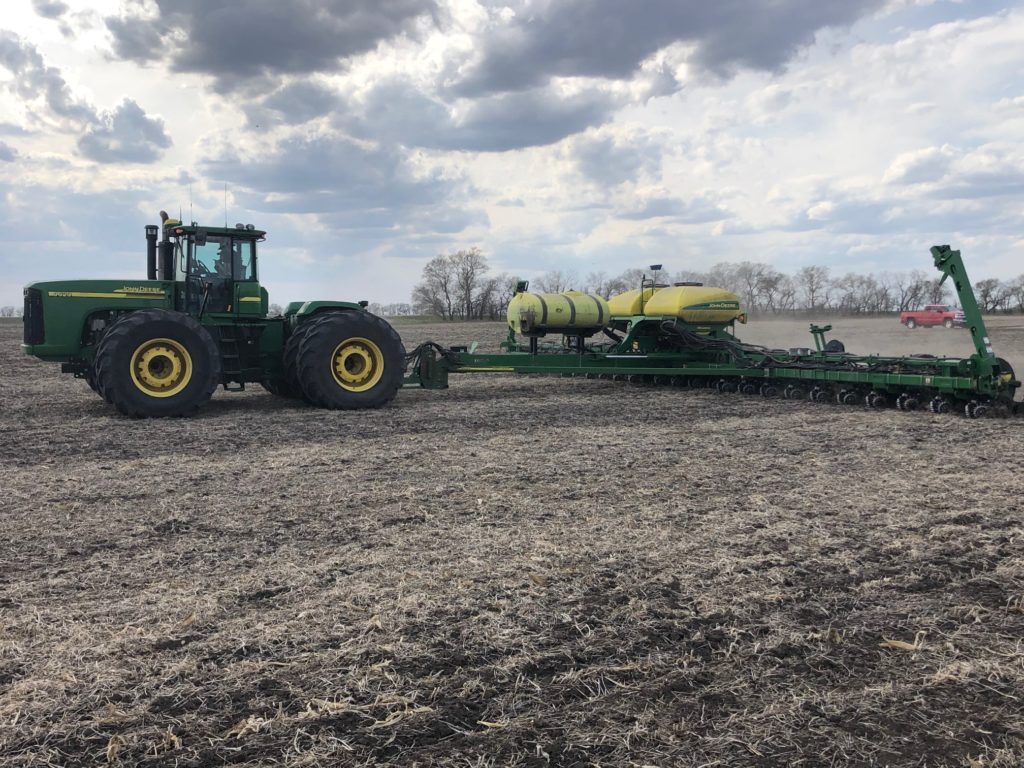

MOHALL—2022 is upon us, and farmers cannot afford to sit back and wait to see what happens for this coming year. It is true nobody knows what the weather will bring in the new year, but we do know what it brought last year (or what it didn’t bring – rain). It was dry in 2021. Terribly dry.
When the wind started blowing this fall, what did you see everywhere? Tumbleweeds. Lots and lots of tumbleweeds. Tumbleweeds are actual weeds that are dried up and dead at the end of the year. They weaken and die at the end of the season just like many crops. They detach at the stems and that allows them to blow everywhere. They can be many different specific weed types, but in our area, it is predominantly Kochia.
Kochia is a curse word for farmers. Farmers must mount a relentless attack on Kochia. 2021 was a great year for Kochia. This weed loves the dry conditions we have had in our area. Kochia, once established, needs very little water to survive. It has a deep root system that is a mechanism to enable it to thrive in weather patterns like we are currently experiencing. Dry conditions have empowered this pest weed to rear its ugly head in many fields. You did not even need to be out standing in a field to see the proliferation of this weed in 2021. You could easily see the disaster fields as you drive by at 55 miles per hour.
During the drought conditions of this last year, it is frustrating to watch crops wither and Kochia thrive. In fact, farmers often joke that if someone can find a way to grow, harvest, and market the Kochia out there, they would be a billionaire. There are some ranchers that will bale Kochia spots and feed it to cattle, however the plant lacks major nutritional components crucial to livestock health, so it is not the most ideal. It is mainly fed in times of short-term feed shortages.
In addition to dry conditions, herbicide resistance also enables Kochia to pull through. An NDSU research study showed areas of Bottineau County, for example, experiencing glyphosate (Roundup) resistant Kochia as early as 2012. That is already nearly 10 years ago now. There have been millions of gallons of glyphosate sprayed on our area acres over the past 10 years. Needless to say, weed resistance to glyphosate is a major issue that is contributing to nasty outbreaks of Kochia.
How do we combat Kochia? We must be on the offense against this weed, and you must plan quickly because acting in the fall is a crucial first step. Valent is an agriculture chemical company that has developed a pre-emergence herbicide called Valor. Valor has typically been used ahead of soybeans in the spring. It is a residual herbicide and comes in dry and liquid formulations. 2-3 ounces is the labeled rate for use in these situations regardless of the formulation. Extensive research over the past few years has shown that a fall application of this product is very effective for Kochia control in the spring.
Research shows 3 ounces of Valor per acre applied from late September to freeze-up provides residual control through the early spring planting prior to around May 15th. The residual effect of the herbicide is best the closer you get to freeze up. However, if you spray earlier, you will still see benefit, and you can go up to 4 ounces and still plant back to most crops in the area. There isn’t much immediate weed contact activity with the Valor itself so if farmers are also targeting weeds in the fall, they must tank mix glyphosate and other burn down herbicides like 2, 4-D. As always, check the label for rotation restrictions. After spraying Valor, you can plant almost anything in the spring except Canola.
Farmers know that in our geography, the challenge with spraying in the fall isn’t the cost, but it is simply having the time to get out in the sprayer. Rains not only slow the harvest but also make conditions sloppy for spraying. Furthermore, once the overnight temperatures start to get lower, many farmers will want to winterize those sprayers. Taking steps to prolong the use of the sprayer up until that first hard freeze and maybe even stopping during a good harvest day to spray is crucial to get a jump on controlling Kochia in the next season.
If the fall conditions didn’t allow for spraying to get the jump on Kochia, then it is crucial that farmers start with a good weed control program as soon as possible in the spring. Of course, wet spring weather will be welcome to prepare for good soil conditions come planting time, however lingering wet weather can cause problems with the timing of pre-emergent weed control. If weather allows for an ideal application of preemergent herbicides, then three separate chemical modes of action give the most added control. In many cases, we talk about going from 95% control to 99% or higher. That’s a big difference. Plus, adding extra modes of action extends residual, lessens the chance for future weed resistance, and increases yield in most cases. This plan gives the best chance to eliminate the nasty, drought monster that is Kochia.
We know we cannot control the weather. We can hope for ideal weather conditions in 2022, but hope is not a strategy.